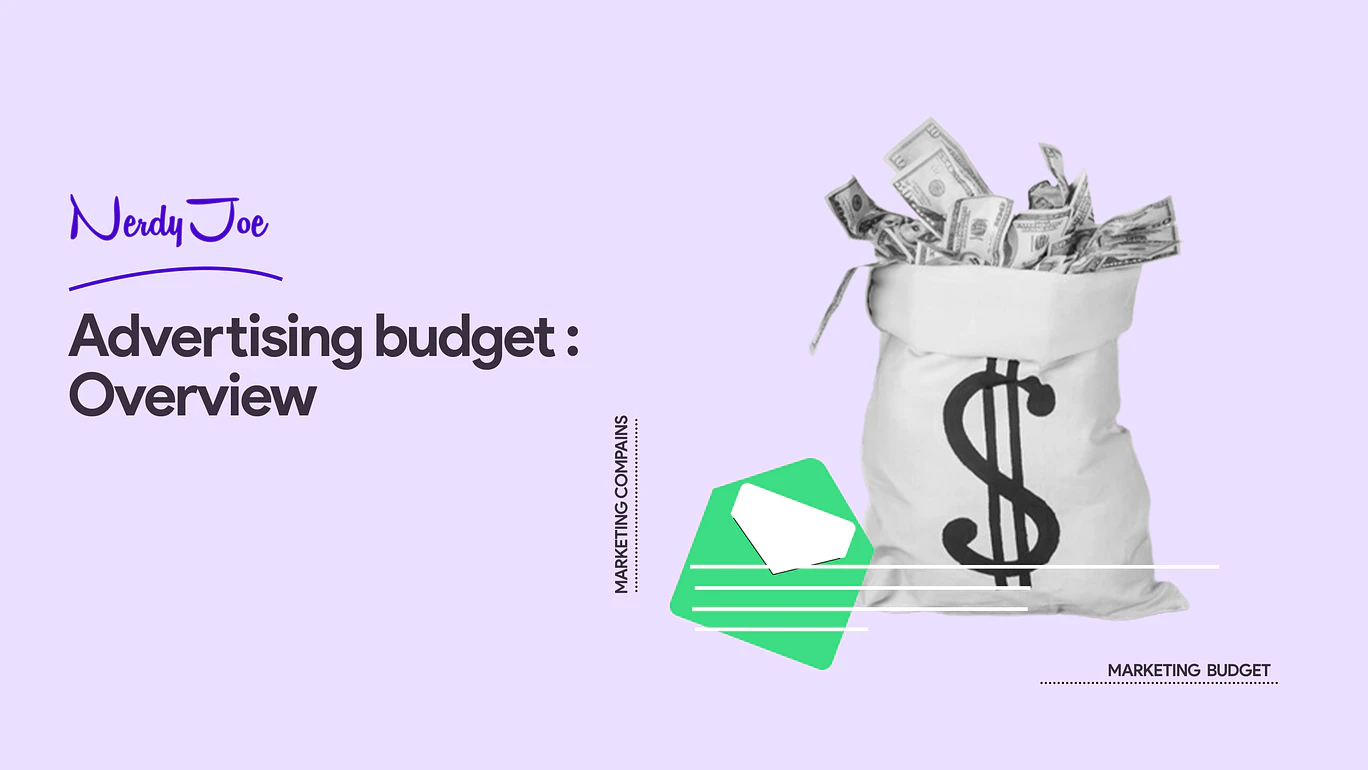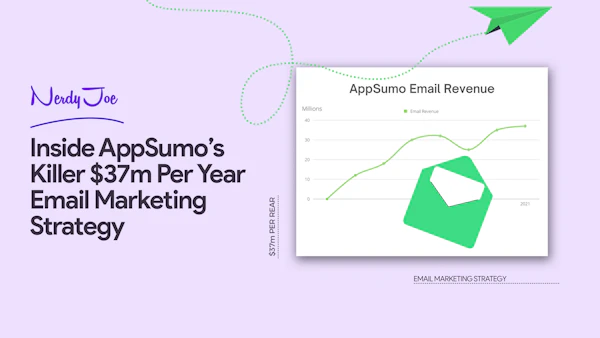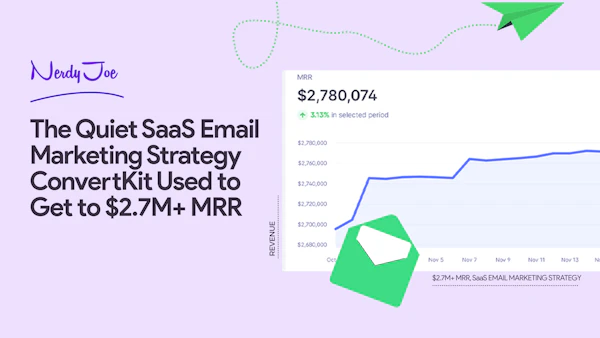
Let's admit it. Marketing is expensive.
Running Google Ads or hiring influencers to promote your products or services often weighs down on your finances. Or should we talk about when you have to hire experts to manage your campaigns for you?
As vital as this is, you need to know how every penny is being spent. Not knowing where every dollar is going could cause costly damages and affect the growth of your company.
But, having a well-thought-out advertisement budget can help you to avoid these issues.
In a nutshell, an advertising budget enables you to make plans on how much you can afford to spend, how to distribute the funds, and decide on what you should be spending on.
That way, you can avoid wasteful spending and focus on the campaigns that truly matter.
In this article, you will learn essential details about advertising budgets, including its benefits, types, and how to set it up.
What is an advertising budget?
An advertising budget (sometimes marketing budget) is the amount of money a business or its shareholders allocate to the business’ advertising and marketing activities over a specific time.
It is the overall amount a company is willing to spend to promote its products or services and achieve its marketing objectives.
Before a company decides on a specific amount, it is essential to consider various criteria to ensure that the advertising budget represents its marketing and promotional objectives.
Some of these criteria considered include:
The target consumer: Having a clear idea of the target consumer and the demographic profile (age, sex, employment, attitudes, or more) can help to shape and guide the advertising message.
The media type for consumers: Depending on the products, consider the best media type for your consumer. Is it Internet advertising (social media, ads) or traditional advertising (radio, television ads, prints)?
The right approach to target customers: What approach should you use to influence your target consumer in purchasing your products? Is the product worth an emotional or rational appeal to persuade the consumers?
Expected profits from each dollar spent (ROI): This may be the most essential and difficult criterion to consider.
Product life cycle: The product life cycle also influences the advertising budget. For example, in the initial stage, consumers are probably not familiar with the brand's product.
Therefore, companies seek to educate and increase product awareness, which requires more intensive advertising. And so, businesses usually allocate a higher advertising budget at this stage.
Typically, promotional spending decreases as a product reaches the post-awareness stage.
By then, most companies are looking for marketing strategies to differentiate or reduce costs. Marketing efforts may still continue, although they are more focused on maintaining existing sales.
Answering these questions enables the company to identify the market conditions they should anticipate and the goals they need to achieve with the advertising budget.
Benefits of setting up an advertising budget
Setting up a budget for advertisement can drive your business forward and reveal the leaky cauldrons that create a huge spendings for your campaigns.
To be more explicit, here are a few reasons why you should set up a budget for advertisement.
1 - Aligns with your business goals
The utmost priority of your business is the goals you intend to achieve. The goals you want to achieve assign the actions and decisions for your business, including how to reach your customers.
Managing your marketing efforts is easier when you have an advertising budget in place.
With an advertising budget, you can identify and choose the right campaign that can help you achieve these goals and even keep track of your progress.
2 - It helps you set up a plan
Investing in an advertisement without a plan only blows out your money.
But when you have a budget and lay out a campaign, you indirectly set up a plan by knowing exactly how much you are spending.
This enables you to have control over your spending and guide your marketing efforts.
For example, a cake business can publish videos to create brand awareness or create ads to improve conversion rate.
By having a budget, you will know that amount you are spending on each advertisement method.
3 - Invest more in profitable campaigns
Every dollar invested in advertisement should generate a return.
After setting up a budget and measuring the performance of your campaigns, you can identify those that are the most successful and invest more in them.
Over time, you understand and identify the winning campaign, increase your profits, and grow your business.
Besides, you can easily identify unprofitable campaigns that let you lose money and drop them.
Types of advertising budgets
Companies have various options when setting up advertising budgets.
Depending on the company's internal situation, they can choose any of the types that suit them. Some of these types include:
1 - Percentage sales method
In this method, the company sets a percentage of the previous revenue as the current or overall advertising budget.
Although this method seems viable, it has been observed to be too conservative and can stunt the company's growth.
While it is safe for small businesses to predict their future sales based on past revenues, a more dynamic business may witness some drawbacks using this method.
2 - Objective and task method
This method is often viewed as the most logical method and used by large businesses. It correlates the current advertising expenditure based on the marketing objectives.
It focuses on the primary goals of the business as the business creates its marketing objectives first and determines how much it will cost to achieve them.
This method is logically consistent as it lays emphasis on the actual needs of the companies and the amount it would cost.
3 - Competitive parity method
Although companies can keep their objectives in mind, they can use a more beneficial approach by comparing their advertising budget with their competitors.
The strategy involves using the competitor's advertising budget as a benchmark for the company budget.
Depending on the situation, the budget may be higher, the same, or lower than the competitors.
4 - Affordable or fund available Method
In this method, the company's budget depends on how much it can afford. The stronger the financial position of a company, the larger the advertising budget.
How to set up an advertising budget for email marketing
Setting up an advertising budget for email marketing often depends on various factors – the purpose of advertisement (brand awareness or sales), your competitors, and more.
However, one thing is clear – you need to spend for you to earn. To help you set up your campaign wisely, here are some tips you can follow.
1 - Set Goals
Growing your email list is crucial to having organic sales.
Having more sign-ups implies having more customers that are interested in your products, high engagements that allow you to be in touch with your audience, and increased sales that generate more revenue.
Hence, it is essential to set measurable goals as your advertising campaign largely depends on them. Some of the goals you can set for your business in email marketing include:
Improving open rate
Increasing CTR
Reducing unsubscribe rate or spam complaints
Improving conversion
2 - Set a Timeframe
Before you begin your campaign, you should identify the duration of your campaign.
Setting a timeframe helps you when drawing your budget and helps you to measure the result effectively. Some common marketing schedules used include:
Sequential: Once in a week or a month and occurs throughout the year
Seasonal: Seasonal sales, for example, Christmas or New Year Holidays
Intensive: An active campaign that takes place for some time, usually between 2-4 weeks, to influence purchase decisions. It is done to sell a particular product.
Impulse: Campaigns are set at regular intervals irrespective of the time of the year
3 - Set an Amount
The next stage is to identify the amount you wish to spend on advertising. Experts suggest two approaches to budget planning for various businesses to derive various benefits such as improving.
If it is a small business, you should allocate 12-20% of the revenue for marketing.
Large Companies should allocate 5-2% of the gross income to marketing.
The next step is to distribute the amount within the specified time. If you are unsure about this, you can use the 70-20-10 rule.
Allocate 70% of your budget towards strategies that work well for your business.
Allocate 20% to new ideas that can help you grow.
Allocate 10% to experiments.
4- Track Campaign
After launching your campaign, you need to track the results.
Measure the performance of your campaign through various metrics such as return on investment, open rates, click-through rates, and more. This enables you to identify successful campaigns and work on the weak ones.
Important Note:
If you are looking for free marketing budget templates, the team at SmartSheet has done an incredible job creating advertising spending considering different marketing channels and marketing goals.
They created different types of marketing budgets and advertising budget methods businesses may consider for their both online advertising and off-internet marketing.
Key Takeaways
An advertising budget is an amount of money set aside for a company's marketing strategy and activities over a specified time. It gives you a sense of direction by identifying and achieving your business goals.
Set your business goals, consider the timeframe, allocate an amount for marketing, and track your results to set up a successful advertising budget for email marketing.
If you're unsure where to start your advertising budget, a good place to start is to look at your competitor advertising spending and identify your overall marketing objectives, from there you figure out marketing costs and allocate funds accordingly.


